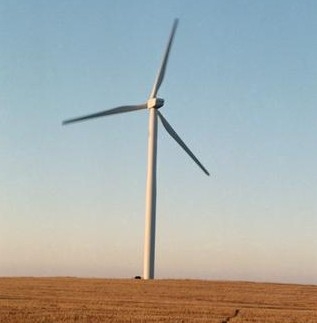The North American offshoot of French firm ENGIE has acquired a 151-MW wind project in South Dakota and found a utility buyer to justify the electricity produced by the farm into the grid.
ENGIE North America acquired the Dakota Range III from Apex Clean Energy for an undisclosed sum. It also announced a power purchase agreement (PPA) with Xcel Energy for the wind farm’s full capacity.
“Dakota Range III continues ENGIE’s significant expansion in the utility-scale renewable market via both greenfield development and acquisition,” said Matt Riley, Senior Vice President and Head of U.S. Wind Development at ENGIE North America, in a statement. “We look forward to completing development of the project with Apex by the summer of 2019, and to serving Xcel Energy, one of the most ambitious investors in renewable energy of any utility in the country.”
Dakota Range III is being developed in northeastern South Dakota and will feature approximately 36 wind turbines slated for operation by late 2019 or 2020, according to the project’s website. Dakota Range I and II, developed by Apex and sold to Xcel last year, total close to 300 MW of electric generation capacity and are located near where III is planned.
“We are pleased to once again work with Apex, and now ENGIE, to bring cost-effective renewable energy to our customers,” said Chris Clark, president, Xcel Energy-South Dakota. “We have a clean energy strategy to nearly double the amount of wind energy on our system in the Upper Midwest by 2022 and this investment in Dakota Range III gets us closer to that goal.”
Minnesota-based Xcel Energy, which has 3.6 million customers in eight states of the upper Plains and southwest U.S., has announced a goal of complete eliminating carbon emissions from its power generation by 2050.
ENGIE North America also is accelerating its clean energy development throughout the U.S. Earlier this year, ENGIE signed a deal with Boston University to buy the power produced from South Dakota wind for the next 15 years. BU chose ENGIE out of 127 renewable energy proposals nationwide.
Most of the companies signing long-term PPAs for renewable energy are not getting that power delivered directly for their use. Instead, the contracts are considered virtual PPAs, allowing the producer to offset the cost of getting the electricity on the grid.
(Rod Walton is content manager for the Power Engineering website and for the POWER-GEN International conference and exhibition, happening Nov. 19-21, 2019 in New Orleans. He can be reached at 918-831-9177 and rod.walton@clarionevents.com).





